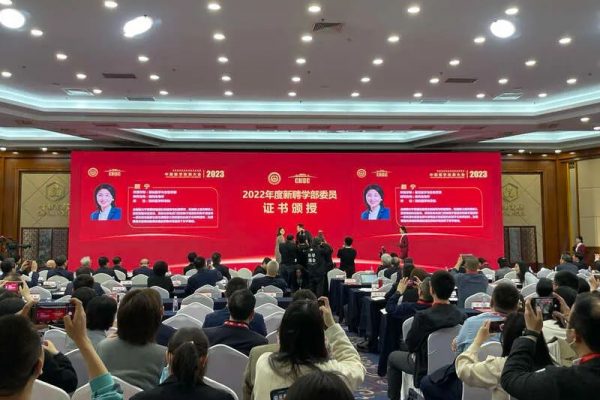Chip发表加州大学圣迭戈分校Shayan Mookherjea团队最新成果:单光子开关数字环路缓冲器芯片级集成的可行性
FUTURE远见| 2022-12-23
Future|远见
Future|远见future选编
单光子级的光学延迟可控制在可调谐的色散原子共振和λ级跃迁附近,由此催生了众多对于基于慢光和原子频率梳的器件的构想。目前,这些构想中的许多都无法通过单片半导体微芯片实现,而单片半导体微芯片通常是在平面晶圆上使用多层光刻工艺制造而成的。此外,对于低于1 ns的延迟时间,目前为止已发现的可以实现至少10个单光子延迟的固态候选材料仍然很少²;可实现低于100 ps延迟时间的材料更是尚未知晓。这些限制使得存储器与基于半导体的指示单光子源的性能适配非常困难³。
迄今,研究人员已经探索了大量的慢光器件⁴,例如,在耦合谐振腔结构中使用热光效应控制光的传播,以及超过无源结构的时间-带宽乘积限制的全光开关延迟环路。然而,缓慢的热光效应限制了开关从开到关的过渡时间,因此,它限制了最小延迟的持续时间。 目前的可扩展集成光子单光子开关仅可实现微秒至毫秒量级的开关时间,比光子寿命长了4到8个数量级。因此,这类器件缓冲单光子的效率很低。
更快的效应主要包括硅等半导体中的电光(载流子驱动)效应和铌酸锂等材料中的泡克尔斯效应(Pockels effect)。块状晶体电光调制器被设计成被任意波形驱动时,需要较大的电功率。此类电光调制器对错位也很敏感,且成本较高,不具有可扩展性。先前对集成电光开关器件的尝试表明,即使在相对较短的时间范围内,集成电光开关器件也无法用于单光子延迟线或量子存储器。然而,最近集成光子学领域的进展促使研究者们重新审视该课题: 能否设计出一种既能高效地捕获单光子,又能在一定时间窗口内将它们按需存储和召回的微芯片光子器件。
图2 | a,单光子探测计数直方图的峰值幅度与编程延迟图。b,在长启动-停止延迟下,用平均直方图计数计算了a中N虚线显示的背景噪声底线。c,100 ps环路器件的每个延迟的二阶自相关,误差条显示其标准差。
针对上述问题,在这篇文章中,作者研究了微芯片光子循环回路作为低噪声单光子数字环路缓冲器的可行性。这种缓冲器具有很高的分辨率和较高的容量,便于它在重定时、同步和其他相关方面的应用。本文实验结果表明,尽管单光子缓冲器的要求十分严苛,在一定条件下,在芯片上实现电压控制的室温捕获和存储的短期光量子存储器是可行的。作者预计,集成光子学的进展最终将为此类器件带来更高的稳定性、封装的简易性和制造的可重复性。与低成本、低尺寸、低重量和低功率的微芯片平台相结合,此类器件这将能使高分辨率可变光延迟组件被广泛应用在单光子水平上。
Feasibility of chipscale integration of single-photon switched digital loop buffer¹
Optical delay at the single-photon level can be controlled near tunable dispersive atomic resonances and lambda-level transitions, which has led to numerous proposals for devices based on slow light and atomic frequency combs. At present, many of these concepts cannot be realized using monolithic semiconductor microchips, which are typically made using multilayer lithographic processing on planar wafers. Moreover, for time bin durations below 1 ns, few solid-state candidate materials, which can achieve at least ten bins of single-photon delay, have been identified up till now², and none are known for 100 ps or shorter time bin durations, making it difficult to match memories to the properties of semiconductor-based heralded single-photon sources³.
Researchers have studied numerous photonic slow-light devices⁴, including, for examples, light propagation controlled using the thermo-optic effect in a coupled-resonator structure, and an all-optically switched delay loop which exceeded the time-bandwidth product limit of a passive structure. However, the thermo-optic effect is slow, which limits the switch on-off transition time, and therefore, also limiting the duration of the minimium time bin. What have been achieved in terms of scalable integrated photonic single-photon switches are microsecond-scale to millisecond-scale switches, which are nearly four to eight orders of magnitude larger than the photon lifetime, and therefore being fundamentally inefficient at buffering single photons.
Faster effects mainly include electro-optic (carrier driven) effect in semiconductors such as silicon, and Pockels effect in materials such as lithium niobate. Bulk crystal electro-optic modulators require large electrical power when designed to be driven by arbitrary waveforms. They are also sensitive to misalignment, meanwhile being costly and not scalable. Previous attempts at integrated electro-optic switching devices have shown too much loss for use as a single-photon delay line or quantum memory even at relatively short time scales. However, recent advances made in integrated photonics have prompted a revisitation of the topic, and whether it would be possible to design a microchip photonic device which can capture single photons with high efficiency and store and recall them on-demand over a certain time window has raised much attention from researchers.
For the above problems, authors have studied the feasibility of a microchip photonics recirculating loop that could be used as a low-noise single-photon digital loop buffer with very high resolution and modestly high capacity, which is beneficial for retiming, synchronization, and other related applications. Although the requirements of single-photon buffers are demanding, our analysis suggested that a voltage-controlled, room-temperature catch-and-store short-term quantum memory for light on a chip may be feasible in certain regimes. It is expected that integrated photonics will eventually lead to higher stability, ease of packaging, and more repeatable manufacturing, which along with the low cost and the low size, weight, and power of a microchip platform, will enable high-resolution variable optical delay components to be widely used at the single-photon level.
参考文献
[1] Wang, X. & Mookherjea, S. Feasibility of chipscale integration of single-photon switched digital loop buffer. Chip 1, 100028 (2022).
[2] Nicolle, M., Becker, J. N., Weinzetl, C., Walmsley, I. A. & Ledingham, P. M. Gigahertz-bandwidth optical memory in Pr³⁺:Y₂ SiO₅. Opt. Lett. 46, 2948–2951 (2021).
[3] Brennen, G., Giacobino, E. & Simon, C. Focus on quantum memory. New J. Phys. 17, 050201 (2015).
[4] Khurgin, J. B. Slow light in various media: a tutorial. Adv. Opt. Photonics 2, 287–318 (2010).
论文链接:
https://www.sciencedirect.com/science/article/pii/S2709472322000260
关于Chip
Chip是全球唯一聚焦芯片类研究的综合性国际期刊,已入选由中国科协、教育部、科技部、中科院等单位联合实施的「中国科技期刊卓越行动计划高起点新刊项目」,为科技部鼓励发表「三类高质量论文」期刊之一。
Chip期刊由上海交通大学与Elsevier集团合作出版,并与多家国内外知名学术组织展开合作,为学术会议提供高质量交流平台。
Chip秉承创刊理念: All About Chip,聚焦芯片,兼容并包,旨在发表与芯片相关的各科研领域尖端突破性成果,助力未来芯片科技发展。迄今为止,Chip已在其编委会汇集了来自13个国家的68名世界知名专家学者,其中包括多名中外院士及IEEE、ACM、Optica等知名国际学会终身会士(Fellow)。
Chip第一卷第四期(2022年冬季刊)已于2022年12月在爱思唯尔Chip官网以金色开放获取形式(Gold Open Access)发布,欢迎访问阅读文章。
爱思唯尔Chip官网:
https://www.journals.elsevier.com/chip
Warning: Invalid argument supplied for foreach() in /www/wwwroot/www.futureyuanjian.com/wp-content/themes/future/single-news.php on line 41



